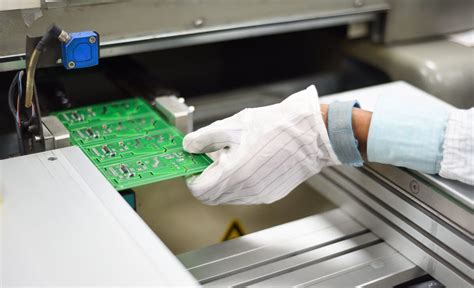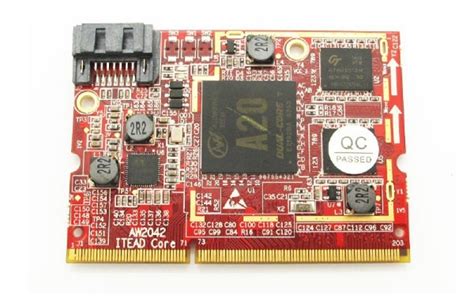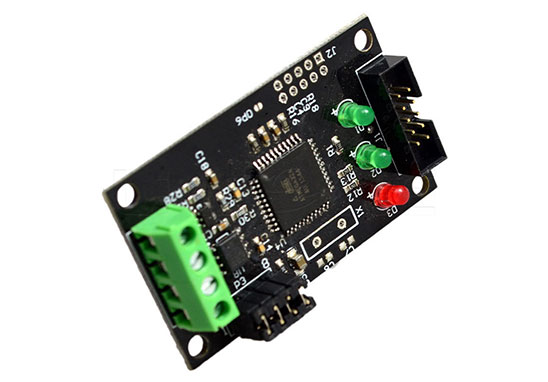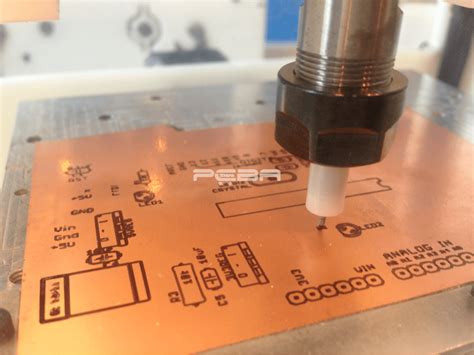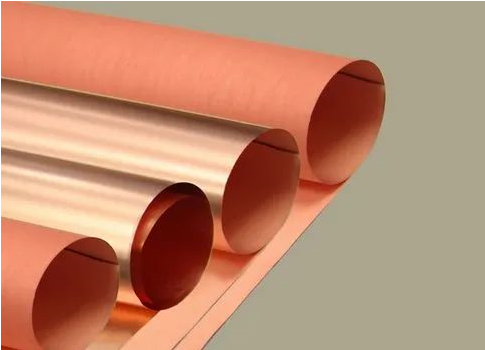Revolutionizing Electronics: The Future of Automated PCB Manufacturing
Key Takeaways
The landscape of pcb assembly is undergoing a remarkable transformation, driven by significant advancements in automated technologies. These innovations not only enhance the efficiency of pcba processes but also contribute to the overall quality and reliability of electronic devices. By integrating automation into pcb manufacturing, companies can streamline their operations, leading to faster production times and reduced costs. The precision offered by automated systems minimizes human error, which is a common issue in traditional production methods. Furthermore, the continuous evolution of robotics and machine learning in the industry empowers manufacturers to adapt quickly to changing design specifications and market demands. As we move forward, it’s clear that automated pcb assembly will play a crucial role in shaping the future of electronics, allowing for the creation of more complex and innovative products across various sectors. This promising shift emphasizes not only operational improvements but also positions industries for heightened competitiveness on a global scale.
The Evolution of PCB Manufacturing: A Historical Perspective
The journey of PCB manufacturing has been nothing short of remarkable, marked by significant technological advancements and evolving methodologies. In the early stages, pcba processes relied heavily on manual assembly, where technicians meticulously placed components on boards. This labor-intensive approach presented challenges such as inconsistent quality and lengthy production times. As electronics began to permeate various sectors, the demand for efficient and reliable pcb assembly soared. The introduction of automation in the late 20th century marked a pivotal point in this evolution. Automated systems not only enhanced the speed of production but also introduced a level of precision that was previously unattainable. Consequently, the adoption of surface mount technology (SMT) allowed for denser component placements, further transforming design possibilities and manufacturing capabilities.
As we progressed into the 21st century, innovations such as robotic assembly lines and advanced machine learning algorithms have substantially optimized pcb assembly processes. These advancements have led to increased scalability and reduced lead times, making it possible to meet the growing demands of various industries—from consumer electronics to aerospace. Today, pcba is synonymous with efficiency and accuracy, reflecting a rich history characterized by continuous improvement and adaptation to new challenges. The evolution of PCB manufacturing not only illustrates technological progress but also highlights its critical role in enabling a new generation of electronic devices that are more sophisticated than ever before.
Key Technologies Driving Automated PCB Production
The landscape of automated PCB manufacturing is significantly influenced by a variety of key technologies that enhance the efficiency of PCB assembly processes. One notable technology is the Surface Mount Technology (SMT), which allows for high-density pcba production. SMT enables components to be mounted directly onto the surface of the printed circuit board, leading to faster assembly speeds and reduced manufacturing costs. Moreover, advancements in robotic automation have streamlined handling and placement tasks, ensuring precision and consistency throughout the production line.
Another critical technology is automated optical inspection (AOI), which plays a vital role in enhancing quality control during the pcb assembly process. AOI systems utilize high-resolution cameras to detect defects or misalignments in real-time, reducing the possibility of errors that can arise from manual inspection. This not only contributes to lowering rejection rates but also enhances overall product reliability.
Furthermore, innovations in smart manufacturing—leveraging data analytics and the Internet of Things (IoT)—allow manufacturers to monitor processes dynamically. By utilizing real-time data, companies can make data-driven decisions that optimize workflow and improve productivity across various stages of PCBA, from design to final inspection.
“Embracing automation technology not only guarantees efficiency but also fosters innovation at every step.”
The combination of these technologies undoubtedly lays down a robust framework that supports scalable production while maintaining high quality standards in automated PCB manufacturing. As these advancements continue to evolve, they promise a future where electronic device creation becomes increasingly sophisticated and efficient.
| Technology | Benefits |
|---|---|
| Surface Mount Technology (SMT) | Faster assembly |
| Automated Optical Inspection | Enhanced quality control |
| Smart Manufacturing | Real-time process monitoring |
In summary, as we explore advancements in automation within PCB manufacturing, it is clear that these technologies are critical in transforming traditional methods into an efficient modern production landscape.
Efficiency Gains: How Automation Streamlines Manufacturing Processes
The integration of automation in PCB assembly has significantly transformed traditional manufacturing processes, leading to remarkable efficiency gains. By automating various stages of the PCBA process, companies can achieve faster production times without compromising on quality. Automation tools such as robotic soldering and advanced inspection systems minimize human intervention, which traditionally introduced variability and potential for error. This dual focus on speed and accuracy allows manufacturers to not only meet growing market demands but also to optimize resource allocation. As a result, manufacturers can adapt swiftly to changes in design while ensuring that the final product meets stringent specifications. Moreover, the use of automated systems enhances traceability throughout the production cycle, providing valuable data that aids in continuous improvement efforts. Ultimately, these innovations position automated pcb manufacturing at the forefront of technological advancement within the electronics sector, paving the way for more sophisticated and reliable electronic products that cater to diverse applications across various industries.
Reducing Errors: The Role of Precision in Automated PCB Assembly
The integration of automation in PCB assembly has significantly impacted precision, a crucial element for ensuring the success of PCBA. In the past, manual assembly processes often led to a higher incidence of human error, which consequently affected the overall quality and reliability of electronic devices. However, with advancements in automated technology, the assembly process has become remarkably precise. Employing advanced machine vision systems and sophisticated robotic arms, modern PCB assembly lines can ensure that components are placed with astonishing accuracy. This precision reduces variability and contributes to uniformity across the boards produced. Furthermore, automation facilitates real-time monitoring systems that can quickly identify deviations in the manufacturing process, enabling immediate corrective actions. The outcome is a substantial reduction in defects during production, leading to higher yield rates and minimizing costly reworks. As automation continues to evolve, its pivotal role in enhancing precision not only supports cost efficiency but also ensures that PCBA remains reliable for an array of applications across different industries.
Cost Efficiency in PCB Manufacturing: Analyzing Automation’s Impact
The implementation of automation in PCB assembly significantly enhances cost efficiency across various stages of production. By integrating advanced machinery and intelligent software, manufacturers can optimize labor costs and reduce the amount of time required for each process involved in PCBA. With automated systems handling tasks such as component placement, soldering, and testing, the reliance on manual labor diminishes. This shift leads to lower wage-related expenses and the minimization of human error, which often contributes to costly defects and rework. Moreover, automation not only allows for faster throughput but also ensures consistent quality, resulting in a higher yield rate. As production schedules become more predictable through automated processes, companies can further capitalize on economies of scale, producing larger batches at a reduced unit cost. By improving material management with precise inventory control provided by automated systems, firms can decrease waste — an essential aspect of developing cost-effective pcb assembly operations. Ultimately, embracing automation translates into a better bottom line for manufacturers while enabling them to maintain competitive pricing against global counterparts in the ever-evolving electronics marketplace.
Innovations in Automated Technology: Future Trends in Electronics
The landscape of PCB assembly is rapidly evolving, driven by cutting-edge innovations that define the future of electronics. As we look forward, various trends in automated technology reveal a compelling narrative about the forthcoming changes in pcba processes. One notable trend is the integration of artificial intelligence (AI) and machine learning, enabling automated PCB manufacturing systems to optimize production in real-time. These technologies analyze vast datasets to predict equipment failures before they occur, thereby reducing downtime and enhancing productivity. Another significant development is the emergence of advanced robotics that perform intricate tasks with unparalleled precision, significantly increasing the speed of pcb assembly while simultaneously maintaining quality control. Furthermore, modular automation systems are gaining traction, allowing manufacturers to adapt their production lines swiftly to changing demands without substantial capital investment. This flexibility not only shortens lead times but also supports customizations that cater to client specifications. As these innovations continue to unfold, they not only streamline manufacturing processes but also lay a robust foundation for creating next-generation electronic devices that are smarter and more efficient than ever before. The expansion in the realm of automated technology is thus setting a promising trajectory for industries reliant on electronic components, indicating a future where excellence and innovation go hand in hand.
The Impact of Automation on Product Quality and Reliability
The rise of automated PCB manufacturing has significantly heightened the standards of product quality and reliability in electronic devices. Automation minimizes human error, which has historically been a major source of defects in PCB assembly processes. With advanced machinery and precision tools, manufacturers can achieve exceptionally accurate pcba results, ensuring that each printed circuit board is produced to exact specifications. This increased precision not only improves the performance of the final product but also enhances its durability under various operational conditions. Additionally, automation facilitates rigorous quality control measures, where real-time monitoring systems detect anomalies during the production phase. As a result, manufacturers are not only able to reduce the occurrence of faulty boards but are also well-positioned to deliver higher-quality products. The integration of automation in PCB assembly processes thus plays a crucial role in establishing reliability benchmarks, which are essential for consumer confidence in electronic devices across multiple industries. In an era where consumer expectations for quality continue to rise, such advancements are pivotal in driving innovation and maintaining competitive advantage within the electronics market.
Bridging the Gap: Automation’s Influence on Different Industries
The integration of automated PCB manufacturing is reshaping various sectors, demonstrating its versatility and impact in bridging the gap between traditional practices and modern efficiency demands. As industries such as automotive, telecommunications, and consumer electronics increasingly rely on advanced pcb assembly processes, they benefit from higher throughput and enhanced reliability in their products. For instance, in the automotive sector, where safety and performance are paramount, pcba techniques facilitate precise assembly of complex circuit boards that control critical functions such as braking and navigation systems. Similarly, the telecommunications industry leverages automation to support the rapid development of new devices, ensuring that they meet consumer expectations for speed and functionality. With automation streamlining production workflows, companies can significantly reduce lead times while achieving a higher rate of accuracy in their assemblies. As sectors adapt to these changes, they not only improve their operational efficiency but also enhance their ability to innovate. This transition underscores the vital role that automated technology plays in fostering collaboration across industries and driving forward a new era of electronic device development.
Conclusion
In today’s fast-evolving landscape of electronics, the transformation brought by automated PCB manufacturing is profound. As the industry shifts towards increased reliance on technology, the processes involved in pcb assembly have become more efficient and precise. The integration of automation not only reduces human error but also enhances the scalability of production, allowing for the production of complex PCBA designs with greater speed and accuracy. Innovations such as robotic soldering systems and advanced inspection technologies have made it possible to maintain high standards of quality while lowering operational costs. This shift signifies a broader impact on various industries, where the demand for reliable electronic components continues to rise. As we look toward the future, it is clear that automation will remain a pivotal element in driving further advancements in manufacturing, ensuring that products not only meet but exceed consumer expectations in terms of performance and reliability. Embracing these changes will be essential for businesses aiming to maintain competitiveness in a rapidly changing market landscape.
FAQs
As the landscape of automated PCB manufacturing evolves, many individuals and organizations have questions regarding its implications and benefits. One common query is about the difference between PCB and PCBA. While PCB refers to the printed circuit board itself, PCBA signifies the board that has been assembled with electronic components, ready for integration into devices. Another frequent question revolves around the efficiency gains achieved through automation. Advanced technologies enable faster production cycles, significantly reducing lead times while ensuring heightened precision in the pcb assembly process. Additionally, inquiries arise about how automation influences cost reduction. By minimizing human error and streamlining workflows, organizations can achieve substantial savings on labor costs and material waste, ultimately enhancing profit margins. Finally, many are interested in how these technological advancements impact product quality. Automated systems are designed to maintain consistent quality standards throughout the production process, leading to higher reliability of finished goods.
To delve deeper into these topics or explore solutions for your PCB assembly needs, please click here: Andwin PCB Assembly.

